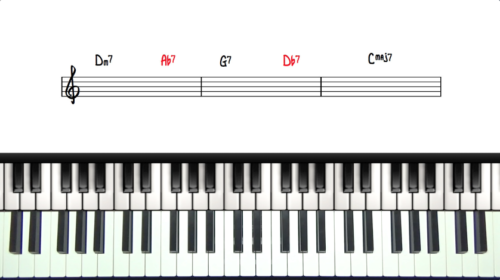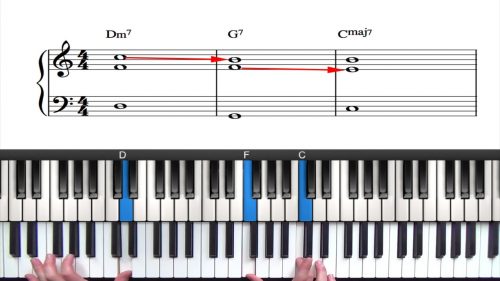“My Foolish Heart” – Navigating The B Section
Welcome to the 2nd lesson in our exploration of the jazz standard “My Foolish Heart” for beginners. After exploring the A section in our previous lesson, we now focus our attention on the B section of the tune to solidify our knowledge of 2-handed spread voicings.
Always Analyse The Melody
This lesson emphasises the importance analysing the melody note in relation to the underlying chord. Analysing the melody and its relation to the underlying harmony can help us to choose the most suitable voicing configuration. Often the 3rd or 7th is the melody note!
Shell Voicing Technique
When the melody is busy – ie. lots of notes in the same bar – we can play left hand shell voicings which are most commonly played using R-7 or R-3-7 of the chord voiced exclusively in our left hand. This is a useful technique to ‘free up our right hand’ whilst ensuring that the harmony is still clearly established.
Shell Voicings & Melodic Embellishments
A key benefit of left hand shell voicings is that they ‘free up’ our right hand for additional melodic embellishments such as turns and grace notes.
An example of this is the D7 chord in bar 13 of the B section. The left hand shell voicing would be D-F#-C which is the R-3-7. This voicing technique can be used in combination with 2-handed spread voicings to create a more varied arrangement style with additional melodic embellishments added where appropriate.
Practice Tips
-
Master the A Section: Ensure a solid grasp of the A section's chords and melody before tackling the B section.
-
Spread Voicings: Continue visualising the notes of the chords spread between both hands. Creating an even spread in the placement of 3rd and 7th notes is important when arranging lead sheets for solo piano.
-
Analyse Melody and Chord Relations: Always analyse how the melody note relates to the underlying harmony. This often helps in choosing the most appropriate chord voicing(s).






